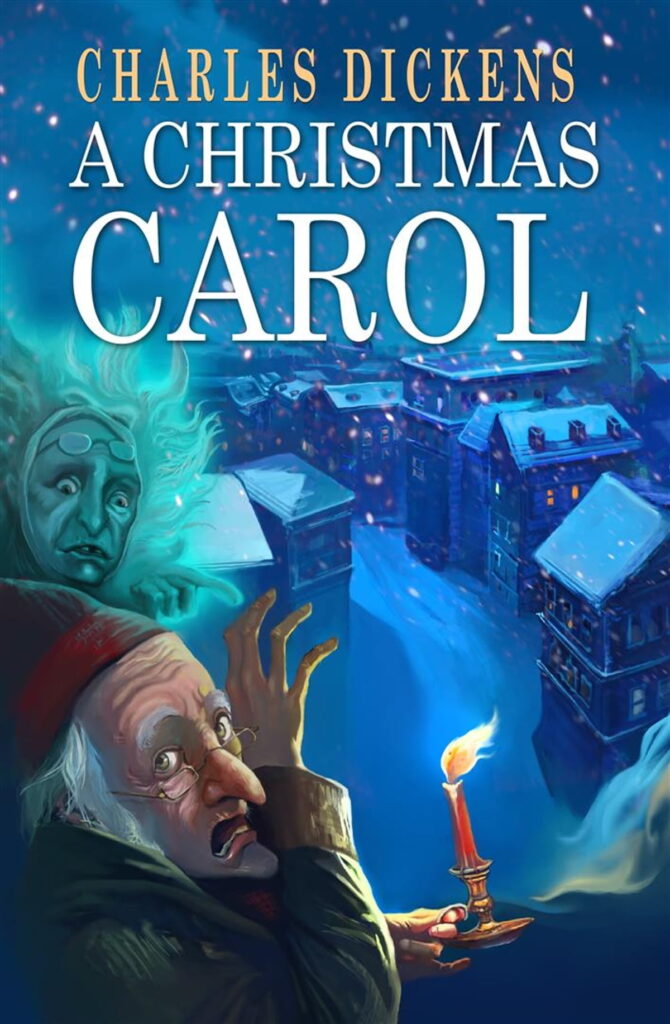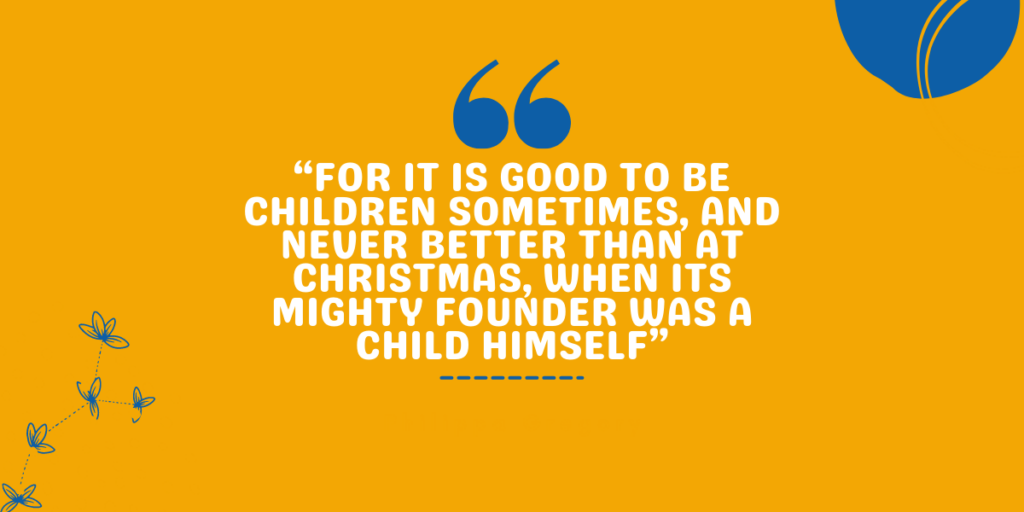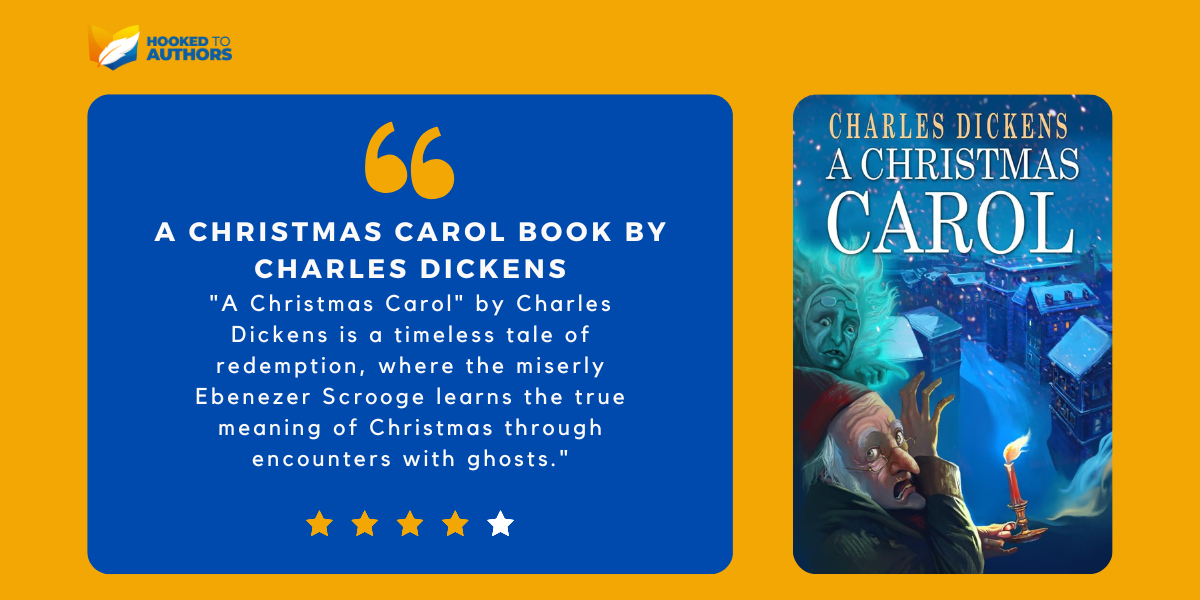Christmas stories make our hearts feel fuzzy and fill them with hope and nostalgia. It’s this feeling that Charles Dickens wanted to tug at when he started creating his Christmas series. A Christmas Carol stands as testimony to this valiant attempt.
A Christmas Carol, a novella published in 1843, was crafted during a time when the British and new traditions were reevaluating Christmas laws were being introduced. Like his other stories, Dickens also wanted this creation to have elements of social commentary.
The novella became so popular that its first edition was completely sold out by Christmas Eve despite being released just a few days prior. The critics raved about the story, and Dickens crafted four more stories in the series in the upcoming years.
The writer commenced public readings of the novella in 1849, which were so well received that he took on 127 more such performances until he died in 1870 A.D. The novella has had the honor of never going out of print and has been translated into numerous languages.
The influences that came along in the form of Western Christmas traditions are evident in the novella, with the story serving as the backdrop for how Christmas began to be perceived and celebrated.
If you are an ardent literature lover looking for A Christmas Carol book review, you have come to the right place. In this article, we will discuss this unforgettable classic while exploring what makes it so timeless and beloved.
| Title | A Christmas Carol |
|---|---|
| Author | Charles Dickens |
| Publication Date | 1843 |
| Genre | Novella, ghost story, allegory |
| Setting | London, England during Christmas |
| Protagonist | Ebenezer Scrooge |
| Antagonist | Himself (as represented by the ghosts of Christmas) |
| Major Themes | Redemption, generosity, social responsibility, the power of memory |
| Plot Summary | Ebenezer Scrooge is a wealthy but miserly businessman who despises Christmas and all forms of kindness and charity. On Christmas Eve, he is visited by the ghost of his former business partner, Jacob Marley, who warns him of the consequences of his selfish ways. Scrooge is then visited by three ghosts – the Ghost of Christmas Past, the Ghost of Christmas Present, and the Ghost of Christmas Yet to Come – who show him the errors of his ways and the consequences of his actions. Scrooge is transformed by these experiences and becomes a generous and kind-hearted man, embodying the true spirit of Christmas. |
| Major Characters | Ebenezer Scrooge, Bob Cratchit, Tiny Tim, Jacob Marley, Ghosts of Christmas Past/Present/Yet to Come |
| Literary Significance | A Christmas Carol" is one of Dickens' most popular works and has become a beloved classic of Christmas literature. It is notable for its exploration of themes of redemption and the power of generosity and charity, as well as its vivid depictions of Victorian England. The novella has been adapted for stage, film, and television numerous times and remains a staple of the holiday season. |
Table of Contents
Summary of A Christmas Carol

The story begins by introducing the readers to the protagonist, Ebenezer Scrooge, on Christmas Eve. He is a mean and grumpy old man with a business in London who keeps uttering the phrase ‘Bah! Humbug!’ to most things.
Bob Cratchit’s clerk is seen shivering in the outer office because the miserly Scrooge refuses to spend money on heating coals to add to the fire. Scrooge is visited at that moment by Fred, his nephew, who extends an invitation to his annual Christmas party.
He refuses the invitation rudely, but Fred doesn’t seem offended by his uncle’s behavior. Scrooge receives a phone call from some gentlemen hoping to get donations for the people who need warmth and food during the holiday season. But he refuses to contribute even a single penny.
Scrooge comments, saying that people experiencing poverty are responsible for their misery, and should rather work at a debtors’ prison or workhouse to feed themselves instead of being lazy.
When the workday is about to end, Scrooge grumpily wonders if his clerk might want to take a leave for Christmas. Therefore, he asks him to reach work even sooner than usual the following day.
After returning home, Scrooge hears a sound that ends up being the ghost of Jacob Marley, his former partner. He seems to be wrapped up in chains due to the deeds he committed during his lifetime, and he warns Scrooge that his chains will be much heavier.
Marley tells Scrooge that he has a chance to make things better and informs him that three ghosts will visit him for the upcoming three nights and that he should listen to them if he wishes to escape the bleak punishment of fate.
Scrooge goes to bed and wakes to find the Ghost of Christmas Past visits him. It is an unusual, childlike figure with a glowing head. Scrooge is taken back to his childhood when he was happy despite all the loneliness.
He is shown Fezziwig, a joyful man with whom Scrooge had his first apprenticeship, and reminded of how his greed drove away Belle, the woman who loved him. It stirs something in Scrooge as he realizes that he has never felt happy since, despite earning lots of money.
After returning to his bed, Scrooge finds the Ghost of Christmas Present, taking the form of Father Christmas and showing him how Christmas is about to unravel that very year. He is taken to the household of the Cratchit family about to consume a not-so-fancy meal.
Scrooge is shown Tiny Tim, the youngest son in the family who is disabled and is predicted to pass away soon if things don’t change for the better. He is also shown the scene at Fred’s home where the guests, including Fred’s wife, enjoy themselves and poke fun at Scrooge.
Fred, however, doesn’t pass any rude comments on his uncle. Scrooge is taken to see how even the financially deprived individuals celebrate Christmas with utmost joy and excitement. By the end of the day, he sees Ignorance and Wants, two starved kids living beneath his coat.
Once the second ghost departs, Scrooge sees the third ghost approaching him in the form of death. The Ghost of Christmas Yet to Come shows him scenes where people discuss an individual who has passed away, but no one seems upset by his demise.
Tiny Tim is seen as dead too, but his family members are determined to hold his memory close to their hearts. The ghost takes Scrooge to the graveyard, where he sees his headstone, realizing he has died and that no one is mourning his absence.
He immediately begs the ghost to allow him to change his ways and alter his fate. Scrooge wakes up to find that he hasn’t lost many days and that it’s still Christmas. He immediately decides to mend his ways.
Scrooge begins by sending a huge turkey for the Cratchit family to feast on for dinner, calls the gentlemen he had ignored earlier, promises to make a huge donation, and attends Fred’s dinner party.
The following day, he offers his clerk a raise and begins to support the Cratchit family financially. Therefore, for the rest of his days, Scrooge attempts to right his wrongs and become a better person.
A Christmas Carol Book Review
Charles Dickens was a champion when it came to exposing the reality of social injustice, which is visible in A Christmas Carol. Using the sweet background of Christmas, he paints a vivid picture of the harsh realities of Victorian society.
Amidst the many themes incorporated by the writer, he also discusses the stark contrast between the different classes present in society and the crude manner in which the working class is treated by those belonging to the upper class.
The endless pursuit of monetary profit and the bottomless pit of selfishness is portrayed through the greedy nature of Scrooge. Dickens underlines how no amount of wealth can replace the happiness derived from benevolence, generosity, and kindness.
The subject of moral rebirth and transformation runs throughout the novella, making Scrooge’s journey almost allegorical. Dickens had a strong faith in the ability of individuals to change morally, as is evident through Scrooge’s graph.
Fate and destiny play major roles in this story, combining with themselves the interconnected strings of time, youth, and the uncertain future. By blending in characters like Tiny Tim, Dickens displayed the plight of the working class and how they were made to suffer at the hands of their wealthy employers.
Hope is imperative for Dickens, especially in a story with Christmas as its foundation. It’s why the undercurrent of faith and happy endings is felt strongly till the very end, providing his readers with a rich and emotionally stirring tale.
Characters in A Christmas Carol

With just a handful of characters, Dickens made A Christmas Carol one of his most loved creations. Some of the characters present in the novella are as follows:
1. Ebenezer Scrooge
The protagonist of the novella. He is a cruel, grumpy, and miserly man who goes through a major moral transformation by the end of the story.
2. Bob Cratchit
Bob is Scrooge’s clerk, whom Scrooge treats very harshly. Despite this treatment and the financial hurdles he faces, Bob remains a kind and dedicated employee.
3. The Ghost of Christmas Past
This is the first ghost appearing in the series of three ghosts. It’s a figure who takes Scrooge to see his past.
4. Jacob Marley
Marley was Scrooge’s business partner. He is equally greedy, and his ghost appears to warn Scrooge to alter his ways.
5. Fred Scrooge
Fred is Scrooge’s nephew. Despite Scrooge’s rude behavior, he has no ill feelings towards his uncle and remains positive.
6. Belle
Belle is shown to be Scrooge’s lover from the past. She broke off their engagement as Scrooge had become too consumed with money.
7. The Ghost of Christmas Present
The second ghost who appears for Scrooge. It shows him the scenes from the current day.
8. The Ghost of Christmas Yet to Come
The last ghost that Scrooge encounters. He shows what the future will look like once Scrooge passes away.
9. Tiny Tim
Tiny Tim is Bob’s son. He is a disabled child who retains his merry nature despite the difficult circumstances.
Famous Quotes from the Novel

Dickens was known for his writing, among many things, and this included his dialogues and interactions. A couple of the famous quotes from A Christmas Carol include:
“There is nothing in the world so irresistibly contagious as laughter and good humor.”
“I will honour Christmas in my heart, and try to keep it all the year.”
“No space of regret can make amends for one life’s opportunity misused.”
“For it is good to be children sometimes, and never better than at Christmas, when its mighty Founder was a child Himself.”
“Men’s courses will foreshadow certain ends, to which, if persevered in, they must lead, but if the courses be departed from, the ends will change.”
Movies And T.V. Adaptations
A Christmas Carol is one of Dickens’ most adapted works. Lending itself to eclectic renditions, here are some of the adaptations that readers can look into:
- A 1938 movie starring Reginald Owen
- A 1970 musical that had Albert Finney playing the role of Scrooge
- A 1988 comedy starring Bill Murray
- A 2001 animated movie by Illuminated Films
- A 1964 T.V. musical that had the actor, Cyril Ritchard
- A 1977 adaptation on BBC
- A 1978 T.V. special on HBO
Conclusion
Some stories leave a lasting impression in people’s minds. A Christmas Carol is one of them.
Being a Christmas Ghost Story, the five divisions of the story keep the readers entertained till the end.
So, whether you’re just beginning your Dickensian journey or have been on it for ages, A Christmas Carol is always the perfect story to resort to.

